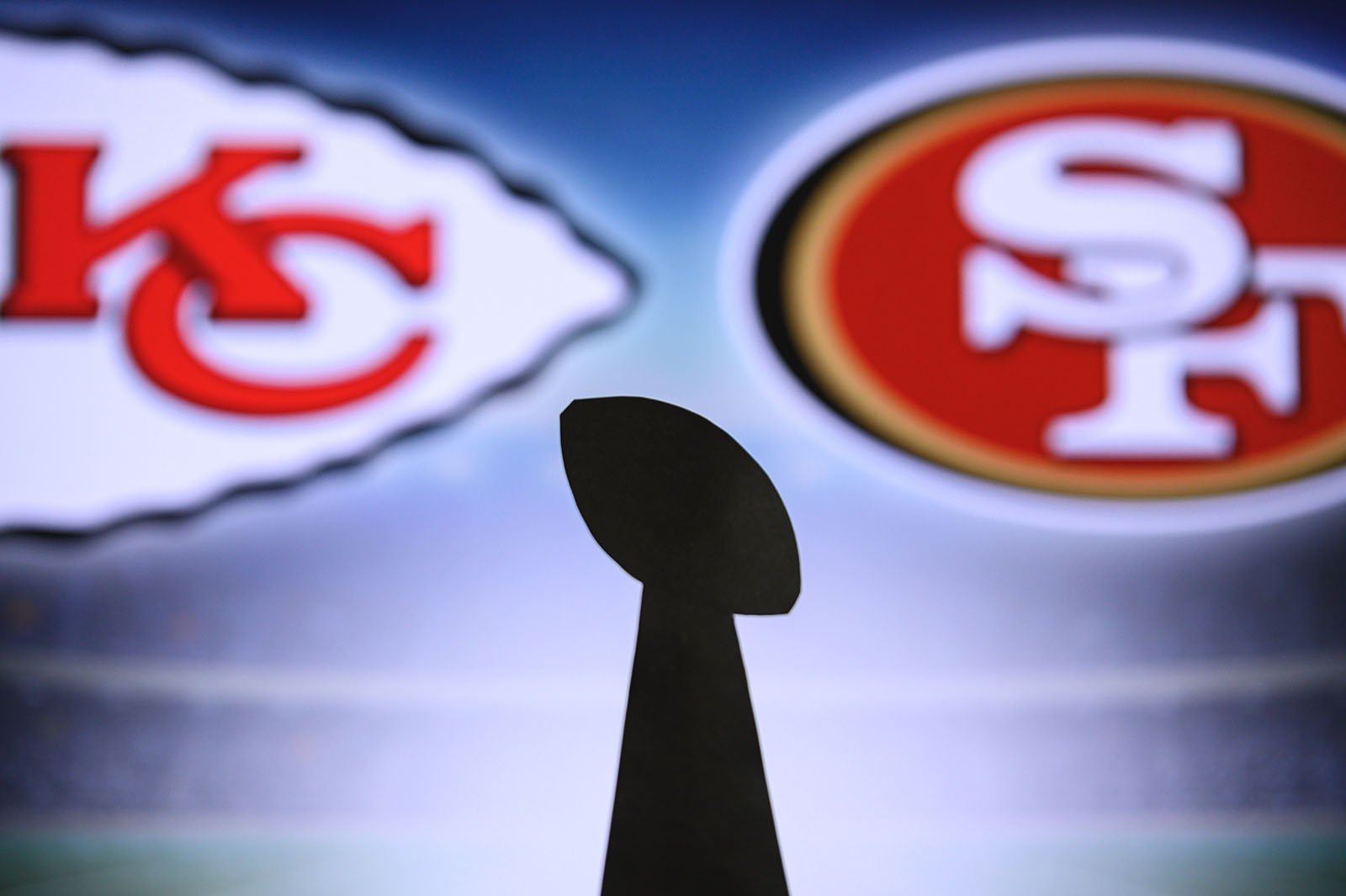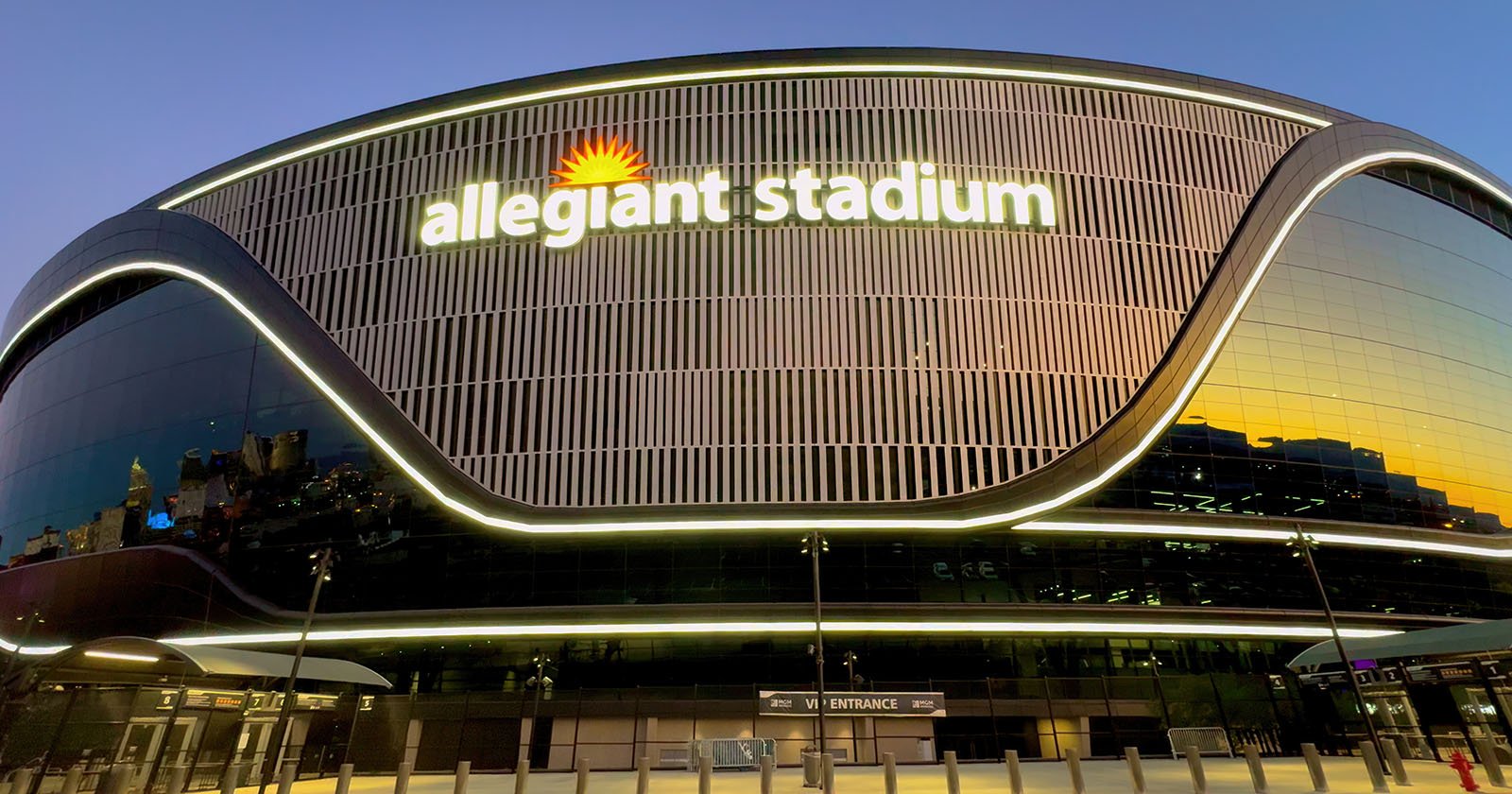
Ahead of Super Bowl LVIII at Allegiant Stadium in Paradise, Nevada, just outside Las Vegas, PetaPixel chatted with Mike Francis, CBS Sports’ Vice President of Engineering and Technology, about the camera technology that underpins not just the broadcast on CBS and Paramount+, but the cameras that help the refs make the correct calls.
Francis and hundreds of others at CBS Sports and Paramount have been working hard in the weeks leading up to tonight’s big game, bringing 20 mobile production units and hundreds of cameras to Vegas.
One of the significant advancements this year is the massive uptick in 4K Zoom-capable Sony broadcast cameras. While the game is broadcast in Full HD on CBS, having 4K resolution enables significant zooming potential and lets viewers at home get closer to the action.
The 4K technology also helps referees when doing video reviews, which can sometimes make the difference between getting a call right or missing it. As any football fan knows, the Super Bowl is a big deal, so it’s crucial that the technology is up to snuff and ensures that refs have every tool at their disposal to make the appropriate decisions.
“We’ve done some level of [4K Zoom] for the last three Super Bowls,” Francis tells PetaPixel over the phone. “Obviously the scale up though has been one angle in Super Bowl 50 to 10 angles in Super Bowl LIII to 12 at Super Bowl LV and to 24 this year, Super Bowl LVIII.”
“And what’s unique this year is it’s not just our big broadcast cameras, but we’ve also brought it into some of smaller point-of-view (POV) cameras that previously didn’t have the technology.”

Francis admits that these 4K Zoom cameras may only matter a little during the typical broadcast action but will be vital during any prospective instant replays or official referee reviews.
“What we do with the 4K imagery coupled with high framerate is extract a 1080p image from the 4K raster, so it gives us the ability to, beyond what we do in the zoom of the optical lens, we can zoom in a replay an additional 400% without losing clarity of the image. So it’s really important on plays where [refs must determine] if a player was inbounds or out of bounds, or breaking the plane of the endzone, or seeing if someone made a catch, if the ball touched the ground, things like that.”
As for the high framerates, Francis says CBS has two mid-level 4K cameras shooting at 480 frames per second. Additional 4K cameras are shooting at 480 fps at the goal line pylons, on the end line of the endzone, and down the sidelines. With 480 fps speed at their disposal, referees can considerably slow down footage while maintaining fidelity. For example, played back at something like 24 fps, a 480 fps feed is slowed down 20 times.
“There’s not a blade of grass on the field that we can’t capture with this technology,” Francis says. “There’s never an angle we don’t have [in the endzone].”
Whether helping refs make the right calls or showing amazing replays to viewers at home, this year’s Super Bowl is poised to offer the most fidelity and top-of-the-line camera technology ever.
Since the cameras are recording 4K, sometimes at very high framerates, every camera must be hardwired. The feeds are sent to production trucks — CBS brought 20 of them to Vegas, four times a typical CBS “game of the week” in the regular season — over fiber optic connections.

“It’s 12 gigabits of data per second when you’re talking about 4K imagery,” Francis explains. “And then you can double that when you’re talking about the high frame rate portion. We have to hardwire based on the vast amounts of data that come out of these cameras systems to run in 4K uncompressed video.”
Nearly all the cameras CBS Sports brought to the Super Bowl are native 4K cameras, even though the broadcast production is still in Full HD.
“Our standard cameras that shoot play-by-play action, we’re running those in HD at 59.94 frame rate. So it’s a big mixture [of resolutions], but everything ultimately makes its way to an HD output.”
As for how many total cameras are in use, Francis says that between the production for the game, the studio, and CBS’ simulcast with its partners at Nickelodeon, there are 165 cameras, not including any backups in case something must be replaced.
“It’s by far our biggest event to date,” Francis says, adding that this is roughly 25 more cameras than CBS used at Super Bowl LV in Tampa, Florida in 2021, the last Super Bowl that CBS broadcasted.
All these cameras must be operated by a person, too, even the remotely controlled cameras. Although, for remote cameras, a single operator can handle multiple cameras. Beyond camera operators, engineers, technicians, producers, directors, and many more help make the broadcast work come game time. CBS has nearly a thousand people working the event.
“We have 20 robotic operated cameras, and then there’s probably another 20 or so POVs. So, we probably have close to a hundred operators as well. Certain operators are running multiple camera angles, especially in the robotic world,” Francis explains.
The POV cameras are sometimes not traditional Sony broadcast cameras, either. While broadcast cameras are models like the HDC-3500, HDC-4800, HDC-5500, and HDC-P50, CBS also uses smaller FX-series models, like the FX6 and FX9, for more intimate, cinematic shots at field level.
Fast prime lenses are heavily utilized on the FX6 and FX9 cameras, showcasing shallow depth-of-field and beautiful bokeh.

“The last few years we’ve started putting some more cinematic look and feel into our show,” says Francis. “We do a lot of hero shots with players running on and off the field and just giving that shallow depth of field look where the subject is in focus and everything behind is a little racked out. It gives you a nice artistic cinema feel versus the traditional broadcast look. It’s been a great creative tool for our production team.”
“We have a variety of different full-frame prime lenses we use depending on what camera we’re using and what the operator’s and director’s preferences are. It’s been a big initiative. I’d say sports coverage in general over the last three to five years is mixing in some of that more artistic look and feel to the traditional broadcast.”
Many of the Sony cameras that CBS Sports uses are also HDR-capable. While the main broadcast on CBS is in SDR, CBS will broadcast the game in HDR on its streaming service, Paramount+.
“Those highlights and low-light details and the colors really pop,” says Francis of the Paramount+ broadcast. “It should be a pretty amazing-looking video.”
Image credits: Header photo licensed via Depositphotos.
